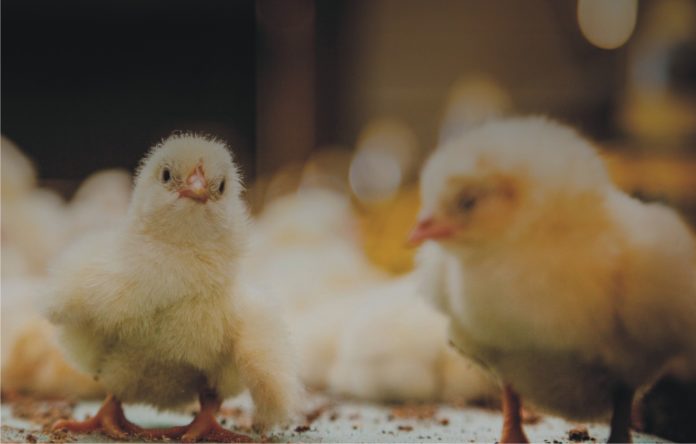

The growth in Indian animal husbandry has on an average been 7-8% over the past few years. This growth has understandably fueled the growth in Indian feed sector as well. While the demand increased, the industry has also evolved substantially over the past few decades.
The Indian feed sector has evolved in terms of developments in process, milling technology (increased throughput & capacity of pellet mills), extent of automation, quality control checks, refinement in formulation etc. However, raw material volatility in terms of pricing, quality and availability has always been a challenge in meeting the demand-supply gap.
In fact, the Indian feed sector has made good progress in terms of the sufficiency of raw materials and continues exploring the possibilities of alternate raw materials for the inclusion into poultry feed. Given this scenario, the Indian feed industry will certainly continue to grow in a positive direction.
Challenges in Developing and Developed markets
The major challenges in the poultry industry vary significantly per region. In countries with a rapid growth in population, rising middle-class and increasing incomes, the meat and egg consumption is growing fast, which is putting pressure on availability of inputs (like raw materials), and requires significant improvements in feed efficiency and bird health control. New technologies and innovations related to precision nutrition, quality control and poultry health care are nowadays instrumental to achieve the required production increases.
In other countries, in particular those with relatively high incomes, a key challenge is to adapt production methods to accommodate rapidly changing consumer demands related to animal welfare, non-GMO and environmental sustainability. Examples include slow-growing broilers, free-range layers and meat produced without any usage of antibiotics and coccidiostats. Interestingly, several of these trends become visible in developing economies at a much faster rate than many of us expected.
At the same time, we see several challenges that are present in almost all poultry production countries, such as disease outbreaks (viz. coccidiosis and necrotic enteritis are currently a costly challenge in broiler production in many countries) as well as the need to minimize production cost (particularly feed cost) in order to stay competitive.
Personally, I do expect that scientific progress related to alternative proteins (like ‘artificial’ meat), combined with the increasing public concerns about climate change and antibiotic resistance, will result in a notable decline in meat consumption in some markets in among others Europe and USA, in the next 3 to 5 years.
Various aspects of poultry farming and feed production in India
- Genetics: Breed should always be more adapted to local climatic condition so as to withstand the hot weather & disease challenge. At present the scenario that we see in Indian poultry as far as genetics is concerned is that 70% of the broilers reared are Cobb 430Y, 15% are SunBro and 15% are other international breeds (Aviagen, Hubbard). Layers is dominated by BV 300 at approx. 85% and others (Hyline, Lohmann, Bovans) at 15%.
- Farm management and Biosecurity: Biosecurity is one of the major concerns and open housing practices pose a challenge to biosecurity for Indian poultry. Hot and humid weather conditions add to the challenge. AGP & antibiotics are still in use. Salmonella and other Enterobacteria management have been a global challenge for poultry producers. There is no magic bullet for this especially in the times of lowered antibiotics and AGP usage. We have developed a comprehensive program to manage these microbes in raw materials, feeds and inside the gut.
- Farm and Feed Mill Audit Programs provide great opportunity to understand the challenge and implement right solutions. Use of the right combination and quantity of various organic acids in raw materials and feeds help to enhance gut health, feed safety and public health.
- Nutrition: Even though over the years we have seen development in poultry nutrition, but aspects like precision nutrition – managing the nutrient levels as per the bird’s requirement and the availability through different raw materials – have still not been explored.
- Feed production: Indian feed industry has been facing challenges with respect to pellet quality specifically in terms of steam quality and conditioning. Added to this, the external environment tends to be quite dry, leading to moisture loss from poultry feeds, which in turn can affect feed intake, and digestibility of poultry feeds. Excessive moisture loss during feed production can also reduce the profitability of feed mills. A “Moisture Management System” which not only helpsin managing moisture in complete feeds but also helps in improving feed throughput, reduce energy costs and reduce mould growth, which is needed under such conditions.
- Responsible usage of antibiotics: One of the concerns for global community has been responsible usage of antibiotics. Indian poultry sector also faces similar concerns. With stricter global norms and also increasing awareness among the Indian consumers, antibiotic usage will become a big challenge in years to come. A better understanding about programmes that help to reduce antibiotic usage will certainly become important.
Innovations in the industry:
There is an extensive research and development happening in the sector globally. From animal nutrition to animal behavior monitoring, various aspects are being studied in order to fully explore the genetic potential of animals.
Innovations like NutriOpt On-site Adviser (NOA), which are able to assess the nutrient quality of ingredients on farm have proved to be important in decision making for the owners while it has also been instrumental in precision feeding programmes of farmers and integrators.
One of the aspects of research area has been feed safety which has led to advancements and innovation in the field. Quality Assurance and Traceability are the key elements in any feed and food safety programs. Raw materials used in animal feeds are exposed to various hazards such as moulds, bacteria, mycotoxins and endotoxins. Subjecting these raw materials to rapid and reliable testing procedures is very critical. Time is of high importance and method to detect the toxins on farm or in feed mill can prove to be very beneficial.
Further, one of the aspects that has gained importance in this digital age is the database and accessibility of the same through cloud. Going forwards integration of Artificial Intelligence with the available database to make more informed decisions shall be explored by the industry.
by Dr. Ruud Eits, Trouw Nutrition













